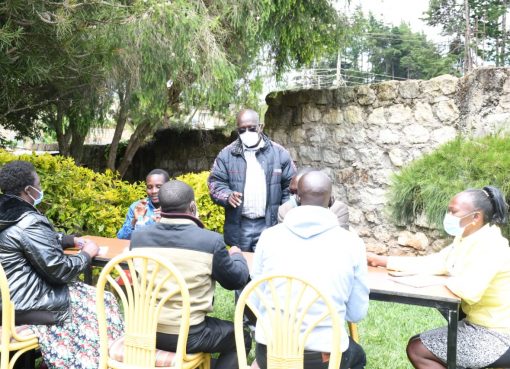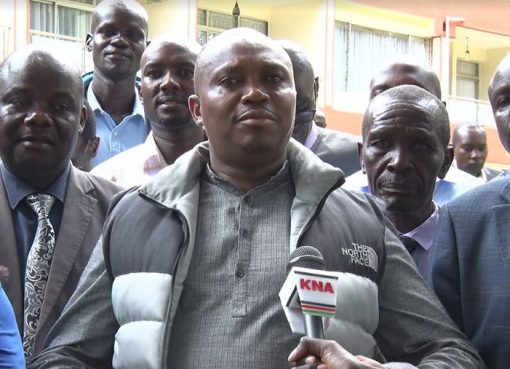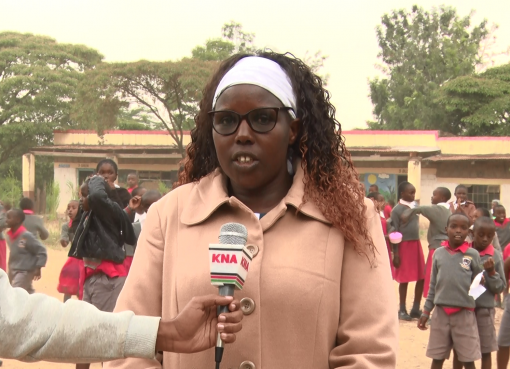With the increasing disasters ranging from natural and environmental related across the globe, vulnerable households have been on the receiving end despite efforts by the government to mitigate the situation before it escalates overboard.
Whenever the Country experiences floods, Busia County has always been in the headlines both in the local and international news. The situation has seen residents urging the government to continue with advocacy for climate change debate across the world.
The County Government of Busia in partnership with its development partners led by representatives from British High Commission in Kenya, The United Nations Children’s Fund (Unicef), World Vision, the Red Cross and line state departments have expressed the need to have long term solutions to disaster and emergency response initiatives in the devolved unit.
Speaking in Busia, the Deputy Governor Arthur Odera has challenged the disaster committee to structure its response approach in order to address the matter before they escalate causing havoc which for many years has impacted negatively on residents living in flood prone areas.
The DG noted that the team is in the county to discuss, assess and explore new working relations geared towards enhancing response during disasters.
“The main focus of our deliberation has been on building resilience and how to ensure we effectively mitigate future disasters. We have also agreed to pay more attention to emerging challenges posed by realities of climate change that pose a great risk to livelihoods,” Odera disclosed.
British High Commission representative and Humanitarian Advisor Carolyne Njihia said Busia is among 14 other counties highlighted to set up disaster mitigation measures which will ensure no lives and properties are lost, not mentioning the displacement where over 300 households are still in the camp.
“We are here in Busia to monitor and review some of the projects being implemented by the British government in collaboration with our partners Unicef. Globally we are experiencing advanced effects of climate change which require speedy response to mitigate the impacts,” said Njihia.
The same sentiments were echoed by Rose Njagi, the Field Operations and Emergency Specialist for Unicef Kenya, who said their visit in the county is geared towards interacting with the leadership of Busia County and beneficiaries, especially children and women in the affected areas of Budalang’i and Teso North.
“Our support complements disaster mitigation efforts by the County government, our implementing partners Red Cross and other state agencies. We are here to assess the impact of these response initiatives and emerging challenges brought about by climate change,” she said.
According to Njagi, Unicef Kenya committees continue with counties prone to disaster in effort to establish long-term disaster mitigation measures which will save the country’s economy from wastage during disaster.
We are aware that floods and disease outbreaks in the region pose a continuous challenge, thus the need to explore other long term measures other than dwelling on response mode only, she added.
However, residents who spoke to KNA urged the government to set up an internal audit team to monitor funds geared towards disaster to discourage pilferage and corruption which disadvantage the affected households.
According to the UNHCR, climate change and displacement are increasingly interconnected. As extreme weather events and environmental conditions worsen with global heating, they are contributing to multiple and overlapping crises, threatening human rights, increasing poverty and loss of livelihoods, straining peaceful relations between communities and, ultimately, creating conditions for further forced displacement.
From the statistics by the Red Cross, about 2045 households in Busia were affected by floods, where up to date over 270 families in Budalangi are still living in IDP camps.
At the same time, 15 schools including Namabusi and Budalang’i secondary schools and Musoma, Buluani, Maduwa, Runyu, Makunda, Rugunga, Rwambua and Iranya and Sikinga primary schools were worst hit by the floods.
By Absalom Namwalo





